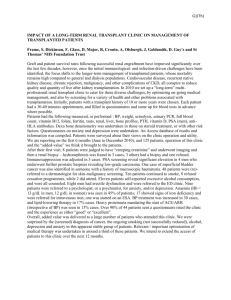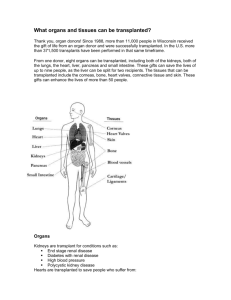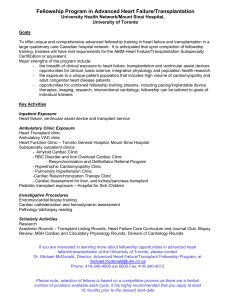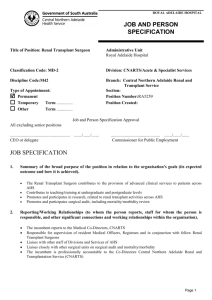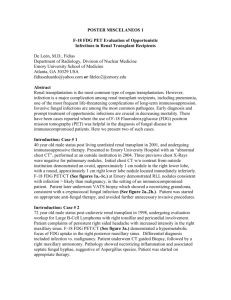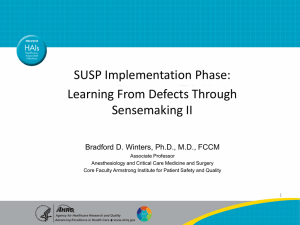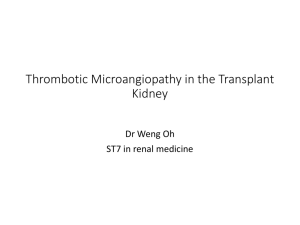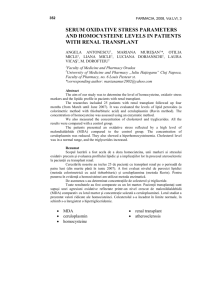Annual Transplant Review Clinic
advertisement
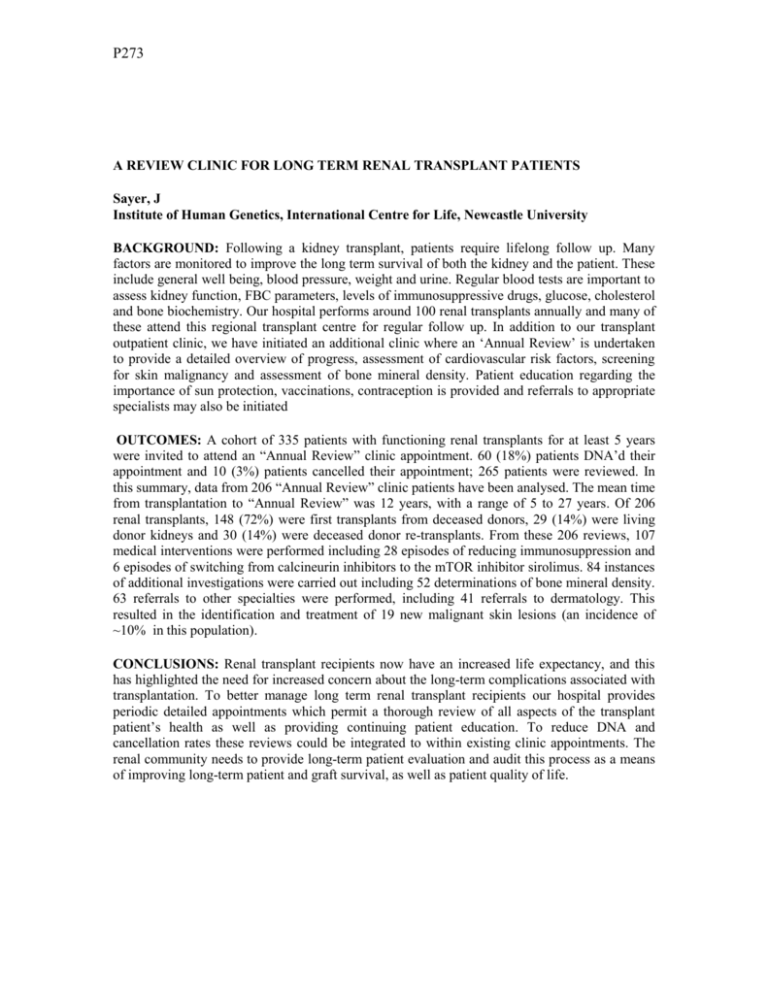
P273 A REVIEW CLINIC FOR LONG TERM RENAL TRANSPLANT PATIENTS Sayer, J Institute of Human Genetics, International Centre for Life, Newcastle University BACKGROUND: Following a kidney transplant, patients require lifelong follow up. Many factors are monitored to improve the long term survival of both the kidney and the patient. These include general well being, blood pressure, weight and urine. Regular blood tests are important to assess kidney function, FBC parameters, levels of immunosuppressive drugs, glucose, cholesterol and bone biochemistry. Our hospital performs around 100 renal transplants annually and many of these attend this regional transplant centre for regular follow up. In addition to our transplant outpatient clinic, we have initiated an additional clinic where an ‘Annual Review’ is undertaken to provide a detailed overview of progress, assessment of cardiovascular risk factors, screening for skin malignancy and assessment of bone mineral density. Patient education regarding the importance of sun protection, vaccinations, contraception is provided and referrals to appropriate specialists may also be initiated OUTCOMES: A cohort of 335 patients with functioning renal transplants for at least 5 years were invited to attend an “Annual Review” clinic appointment. 60 (18%) patients DNA’d their appointment and 10 (3%) patients cancelled their appointment; 265 patients were reviewed. In this summary, data from 206 “Annual Review” clinic patients have been analysed. The mean time from transplantation to “Annual Review” was 12 years, with a range of 5 to 27 years. Of 206 renal transplants, 148 (72%) were first transplants from deceased donors, 29 (14%) were living donor kidneys and 30 (14%) were deceased donor re-transplants. From these 206 reviews, 107 medical interventions were performed including 28 episodes of reducing immunosuppression and 6 episodes of switching from calcineurin inhibitors to the mTOR inhibitor sirolimus. 84 instances of additional investigations were carried out including 52 determinations of bone mineral density. 63 referrals to other specialties were performed, including 41 referrals to dermatology. This resulted in the identification and treatment of 19 new malignant skin lesions (an incidence of ~10% in this population). CONCLUSIONS: Renal transplant recipients now have an increased life expectancy, and this has highlighted the need for increased concern about the long-term complications associated with transplantation. To better manage long term renal transplant recipients our hospital provides periodic detailed appointments which permit a thorough review of all aspects of the transplant patient’s health as well as providing continuing patient education. To reduce DNA and cancellation rates these reviews could be integrated to within existing clinic appointments. The renal community needs to provide long-term patient evaluation and audit this process as a means of improving long-term patient and graft survival, as well as patient quality of life.

